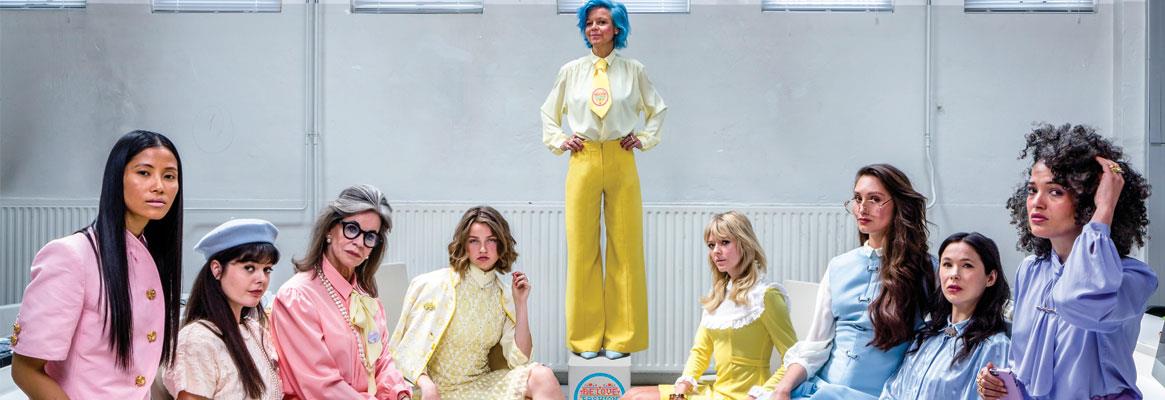There is a trend gathering steam in the Netherlands, and that is of vintage clothing bound intricately around the concept of sustainability. Hop around to the 'The Ninth', Amsterdam's famous shopping district-deriving its name from the fact that as many as nine lanes around the picturesque canals constitute this famous shopping area where you can walk, browse or just idle at the cafes and watch life hurried yet gently glide by. The Ninth is also home to some of the most popular vintage shops which source good re-wearable clothing and accessories that could have been donated to charities or sold to sorting companies before they reach their quaint doors.

And before the wares find a spot on the various shelves, those-the clothing specially- are repaired and washed. Some of the more popular vintage stores in the city include Bygones Vintage, Episode, Marbles, Laura Dols, Indiana Weg, Zipper, Bijons, 50|50 Reshare. And, of course, there is the IJ Hallen market, counted among the biggest, if not the biggest flea market in Europe.
A strong proponent of the second-hand concept is a studio around Ninth street. You enter a quiet door amidst the hubbub of the marketplace, walk up a darkish, narrow red-carpeted flight of stairs, and as you step into a long spacious room on the third floor, you are greeted by two white cats as they sidle, purr, jump, walk over and around you, and wash themselves unabashedly, even as you hold a conversation, the walls choc-a-bloc with hangers full of clothes, bags, some jewellery and a long table at the centre with some more clothes, sketches, papers, bric-a-brac. This is the Re Love Foundation office promoted by Antoinette van den Berg or the Lady in Blu-of aquiline features framed by hair dyed a shocking bright blue, tall and teetering on high pencil heels.
Re-love fashion, says she, is full of joyful alternatives for consumption of new clothes- re-touch and re-use. "It is time to make re-use, re-touch, re-style, re-pair and re-peat fashion socially accepted and appreciated and so reduce the pollution of the industry."
The Lady in Blu started on the concept of re-love fashion and founded the Re Love Foundation in 2018 "as an institute for all Re Love activities." Its core values: promote, stimulate and activate less consumption of new clothes; work for a behavioural change among consumers (less consumption) and companies (less production) of new clothes; and, develop creative concepts that activate less production of new clothes, for companies.
-
The fashion industry is polluter number 2 in the world. We use four times as much clothes in weight as a couple of years ago. Sustainable production becomes the norm, but it is like mayonnaise light-you still can eat as much as you want. At the same time, it becomes clear that producing and consuming less new clothes is the most effective way to reduce the pollution of the fashion industry.
- The key problem in the fashion industry. The current fashion system promotes consumption of new clothing. Magazines, influencers and online platforms are fed by the brands with new clothes, visual content and they offer financial resources that runs their business. The brands have only one purpose-stimulating even more sales of new clothes. That works!
- The fashion industry is under enormous pressure and fashion is getting a black flavour. The fashion industry starts to realise that something is going terribly wrong; they want to do something, but how? They look for opportunities and content to change the system and break the link between fashion and pollution and give more purpose to their business than just making money. The system must be changed.
- Expected results. There will be less consumption of new clothing and thus less pollution by the industry. Consequently, a healthier "new" economy is stimulated which does not pollute to the extent that the old / current fashion economy does. The fashion look will be more random and non-label dictated, in which creativity and the attitude towards the environment gains a higher social status than the underlying value in money and possessions (which until now often determined the social status of clothing).
Click here for complete article.










Comments